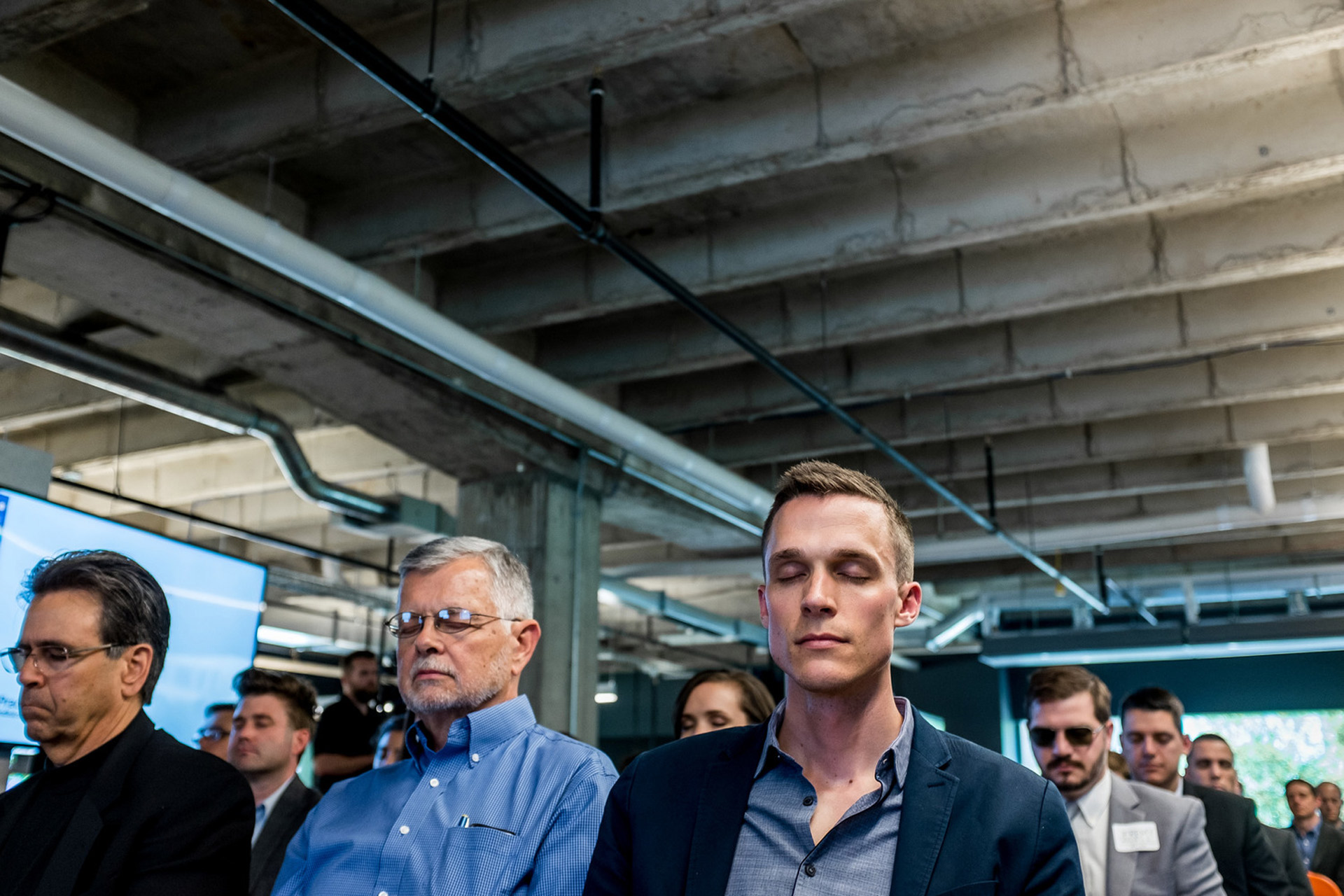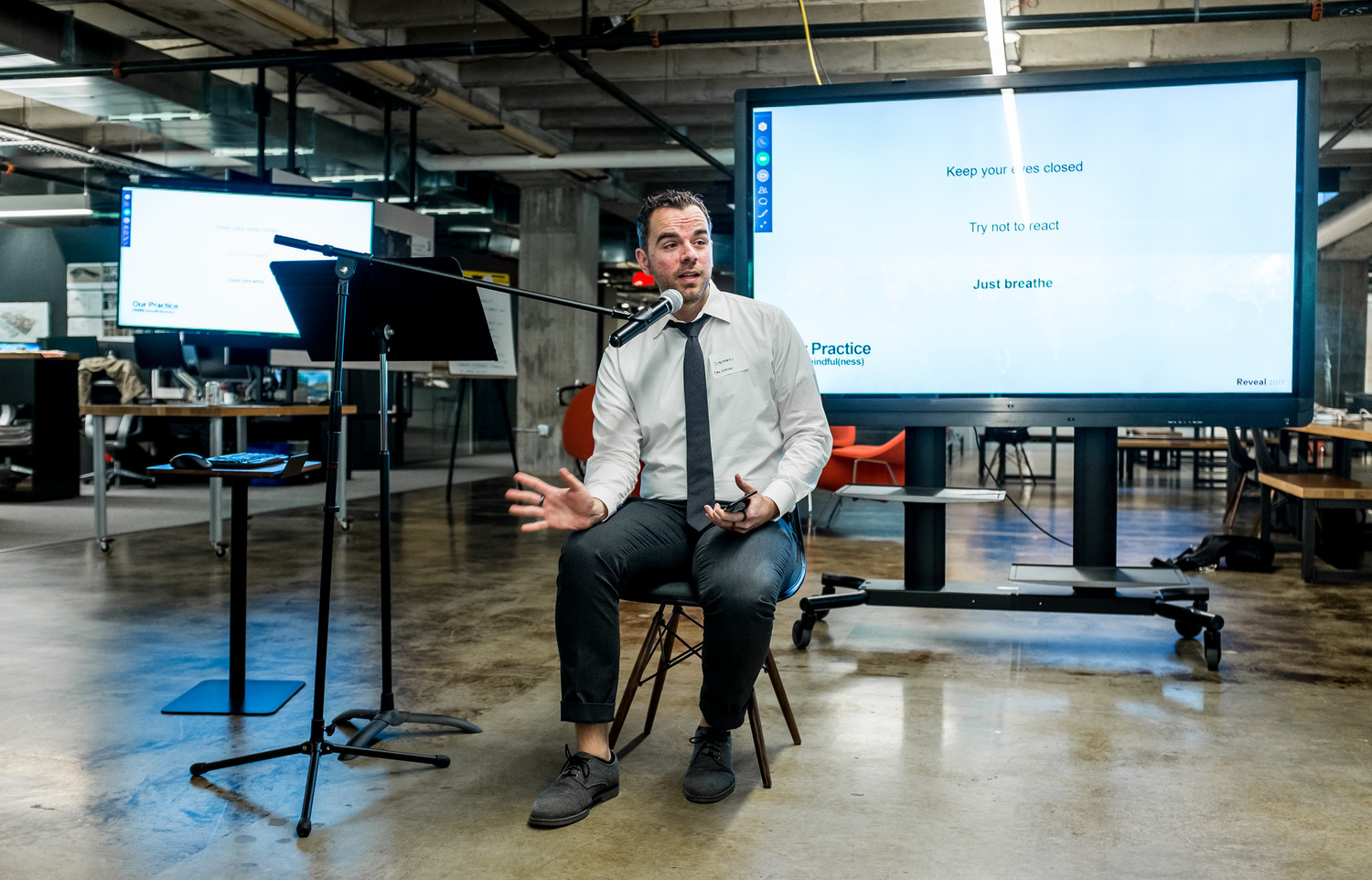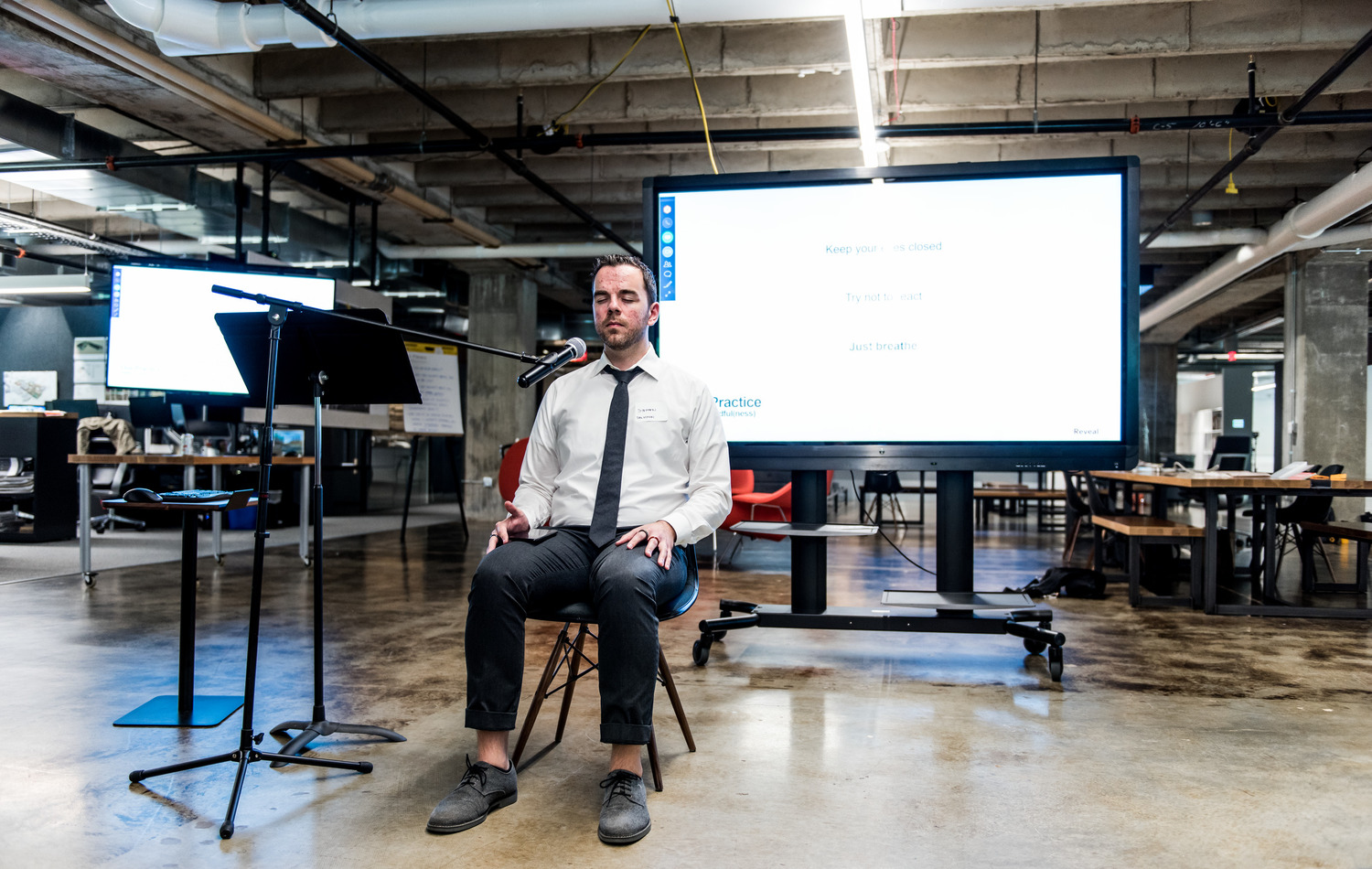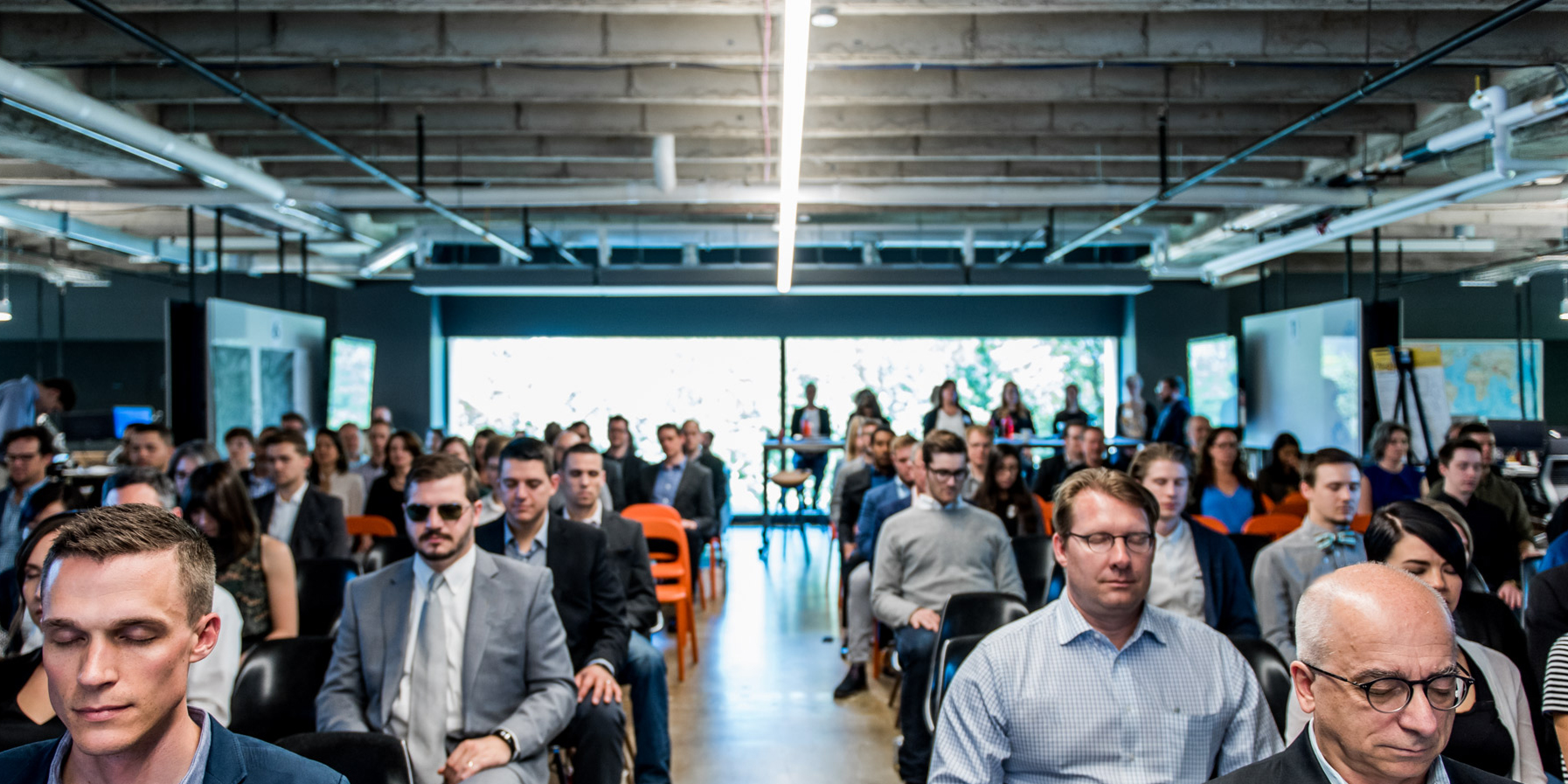Recommendations to Get You Started
Jack Kornfield’s “Meditation for Beginners” audiobook
Jack Kornfield’s other publications
Thich Nhat Hanh

The Practice of Practicing Mindfulness in the Architectural Profession
Have you ever been in the middle of a shower and forgotten if you’ve shampooed? Or, gone through an intersection and thought, “I hope that light was green!” Have you ever triumphantly argued with someone, but realized you weren’t actually talking with anyone — the entire exchange was in your head? These are examples of ‘unmindfulness’ — moments of disconnection with our existence because we are distracted by our thoughts and fears.

We know that the architecture industry is inherently demanding, so how can we work proactively to combat the stress and enhance the human condition? At BNIM, we practice mindfulness meditation more than twice per month across our offices. As the current facilitator of these sessions, I have found that taking time for a 30-minute talk and meditation session, especially during a hectic day, allows my colleagues to find clarity in to-do lists, calm in complex projects, and space for honesty regarding the intensity of our profession.
Much like architecture, mindfulness is a practice. The Vietnamese firm Vo Trong Nghia Architects implements a two-hour daily meditation at its offices. “Ninety or 95 percent of thinking is unnecessary,” Vo Trong Nghia says. “It’s super hard for humans to stop thinking, but suddenly your mind becomes really calm, really quiet, and then the idea comes out.” By simply observing the experiences within and around you, mindfulness meditation can help you achieve a better life balance and reconnect with your creativity.

Anyone can do it and here’s how:
- Set a timer for 10 minutes. Sit comfortably upright and close your eyes.
- Use your breath as a foundation to your meditation practice: discover where in your body you feel the movement of your breath. Is it in your chest, your belly, or even the tiny hairs on your upper lip just outside of your nostrils?
- Once familiar with your breath, turn your focus on the sensations that exist within and around your body. Is there an itch on your ankle, a dull pain in your neck, or rumbling in your stomach? Do you hear sounds around you, or air moving across the top of your hands?
- Check-in with your mood and emotions. Are your legs jittery from anxiety or eyes droopy from sleepiness?
- Realize and accept that you are still thinking — acknowledge thoughts that arise, let them pass without judgment, and return to your breath.
- Find clarity in the silence between each thought

Meditation helps you connect with your desires. Committed practice actually changes our brain, increasing gray matter in areas associated with sensory feelings, memory, and decision making. Mindfulness also reduces anxiety, implicit age and race bias, and depression; and improves body satisfaction, cognition, and focus. This clear thinking allows the egos, thoughts, and fears so prevalent in our industry to fade away.
At BNIM, we have the desire to implement human purposed integrated design, whether that’s creating a beautiful building, rebuilding a city devastated by a tornado, or changing a nation’s viewpoint on sustainable power creation.
Realize you are capable and worthy of achieving your desires and fulfilling your purpose. We are all connected. We all desire to achieve something great for humanity — this is clearly stated in our purpose and mission at BNIM.
From this place of mindfulness, desire, worth, and connection, our truly important work on this planet can take place. Let’s practice.
Namaste.
Posted to Medium.
Stephen Sanda is an architect in BNIM’s Des Moines office.


